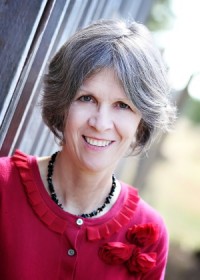WRITE: Interview with Susan Meissner
Susan Meissner is a multi-published author, speaker, and writing workshop leader with a background in community journalism. Her novels include The Shape of Mercy, named by Publishers Weekly as one of the Best Books of 2008, also received the Christian Book Award for fiction. She is a pastor’s wife and a mother of four young adults. When she’s not writing, Susan directs the Small Groups and Connection Ministries program at her San Diego church. 1. Before you wrote novels, you wrote and edited for an award-winning small town newspaper. Can you describe how that experience helped prepare you for your writing work today? Writing for a newspaper teaches you to hook your reader with the first sentence and to write economically. I was told to think of each word as costing me a quarter so that I would be stingy with my words! Newspaper stories are all about brevity and yet completeness. Readers absolutely want to know the who, what, where, when, why, and how –it’s not like you can skip a couple–but you can’t be longwinded. Readers won’t read a newspaper story that goes on and on and on. Novels of course are longer and readers want their money’s worth in terms of length but the lesson is the same – When you can tell a story in ten amazingly good words instead of 20 just plain good words, you draw your reader in and they don’t want to let go. 2. How and why did you choose to designate your work as “Fiction for the restless reader”? When I began writing for the Christian market in 2004, I had a hunger for literary fiction from a Christian worldview, which can sometimes be different than Christian genre fiction. I was restless for it and there didn’t seem to be enough of it. So I wondered if maybe there were others out there like me who wanted fiction from a Christian world view, but not necessarily Christian fiction. The difference might be described as one having an overt Christian theme and the other having a subtle Christian theme. It was the latter I was restless for more of. I figured there other readers out there like me. 3. Lady in Waiting ties together the stories of two Janes: present-day antiques store manager Jane Lindsay and 16th century Lady Jane Grey. Which story proved more challenging to write, and why? Strangely enough writing the contemporary story of Jane Lindsay was the harder one because she plays a very passive, deferential person and I am not like that at all. I struggled to make her likeable. Sometimes I just wanted to slap her! But that was her flaw, you see. Every character...
Read More



